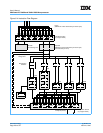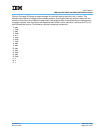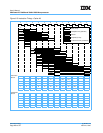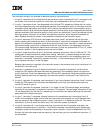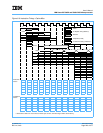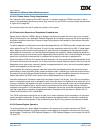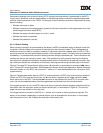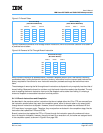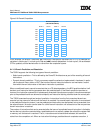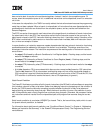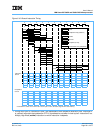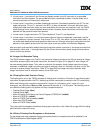
User’s Manual
IBM PowerPC 750GX and 750GL RISC Microprocessor
gx_06.fm.(1.2)
March 27, 2006
Instruction Timing
Page 225 of 377
When the dispatch unit dispatches an instruction to its execution unit, it allocates a Rename Register (or
registers) for the results of that instruction. If an instruction is dispatched to a reservation station associated
with an execution unit due to a data dependency, the dispatcher also provides a tag to the execution unit
identifying the Rename Register that forwards the required data at completion. When the source data
reaches the rename register, execution can begin.
Instruction results are transferred from the Rename Registers to the architected registers by the completion
unit when an instruction is retired from the completion queue, provided no exceptions precede it and any
predicted branch conditions have been resolved correctly. If a branch prediction was incorrect, the instruc-
tions fetched along the predicted path are flushed from the completion queue, and any results of those
instructions are flushed from the Rename Registers.
6.3.2.7 Instruction Serialization
Although the 750GX can dispatch and complete two instructions per cycle, so-called serializing instructions
limit dispatch and completion to one instruction per cycle. There are three types of instruction serialization:
6.4 Execution-Unit Timings
The following sections describe instruction timing considerations within each of the respective execution units
in the 750GX.
6.4.1 Branch Processing Unit Execution Timing
Flow-control operations (conditional branches, unconditional branches, and traps) are typically expensive to
execute in most machines because they disrupt normal flow in the instruction stream. When a change in
program flow occurs, the IQ must be reloaded with the target instruction stream. Previously issued instruc-
tions will continue to execute while the new instruction stream makes its way into the IQ. However, depending
on whether the target instruction is in the BTIC, instruction L1 cache, L2 cache, or in system memory, some
opportunities might be missed to execute instructions. The example in Section 6.3.2.3, Cache Miss, on
page 222 illustrates this situation.
Execution Execution-serialized instructions are dispatched, held in the functional unit, and do
not execute until all prior instructions have completed. A functional unit holding an
execution-serialized instruction will not accept further instructions from the
dispatcher. For example, execution serialization is used for instructions that
modify nonrenamed resources. Results from these instructions are generally not
available or forwarded to subsequent instructions until the instruction completes
(using a Move-to Special Purpose Register [mtspr] instruction to write to an LR or
CTR does provide forwarding to branch instructions).
Completion (also referred
to as post-dispatch or tail
serialization)
Completion-serialized instructions inhibit dispatching of subsequent instructions
until the serialized instruction completes. Completion serialization is used for
instructions that bypass the normal rename mechanism.
Refetch (flush) Refetch-serialized instructions inhibit dispatch of subsequent instructions and
force refetching of subsequent instructions after completion.




